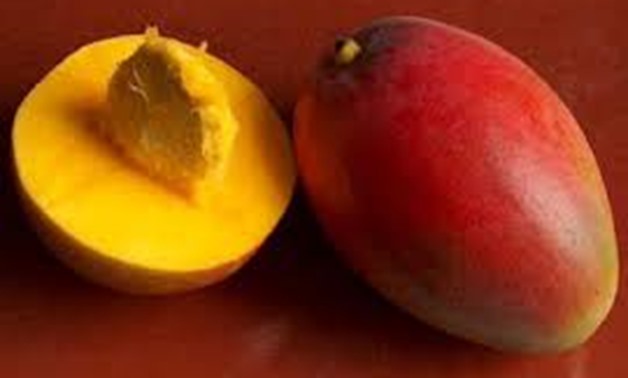
Photo of different types of mangoes - File photo
CAIRO - 31 August 2017: Fresh Egyptian mango is one of the most nutritionally rich fruits, with a distinctive flavor, smell and taste, which is why Egyptian mango is a unique fruit, with an incomparable tropical delicacy.
Golden yellow, crimson red, orange-red, or green; regardless of its color, the “fruit of the Gods” according to Indians, is always finger-licking good. Mango’s overwhelming taste will overcome your senses, even before you remind yourself to eat in moderation.
History of Egyptian Mango
The mango was first brought to Egypt from Sri Lanka. The fruits cultivated by Sri Lankan farmers are, in turn, derived from Indian varieties.

Later on, Mohamed Ali Pasha planted the first shrubs in 1825. The first mango tree was planted in what is known today as the garden of the Egyptian Faculty of Agriculture at Ain Shams University. Ironically, it was originally regarded as decorative rather than a fruit tree.
Cultivating areas
Mangoes grow in areas with high humidity, like coastal areas, such as the Nile Delta. They grow best in tropical regions.

In Egypt, the governorate of Ismailia is the main mango-growing area, known for producing the finest mangoes. The soil and climate of Ismailia are especially favorable for the cultivation of Egyptian mangoes. The city of “Beauty and Enrichment” includes vast areas of fertile agricultural land, producing the most famous Ismaili mangoes.
Successfully planted in diversified spots of land, mango is cultivated on 33,904 acres throughout the country. On a yearly basis, the mango harvest in Egypt starts from July and lasts until November, bringing farmers an abundant income in comparison to cultivating other fruits.
 Celebrating the mango harvest
Celebrating the mango harvest
The season of the mango harvest is always celebrated. Dates for social occasions, especially wedding parties, are often set corresponding to the date of the mango harvest. The faces of buildings, squares, houses and shops are painted in yellow.
The most famous types of Egyptian mangoes are Owais, excellent sugary mango, white sugary, butter-like mango (Zebdea), and Sinara, as well as other famous types of mangoes.
Egypt exports mango, namely the Tymor, Awees, Indian, AlFons, Zebdia, Sukaria, Kihat and Senara types, to several European countries.
Mango’s health benefits
Mango fruit is an excellent source of vitamin-A and flavonoids like beta-carotene, alpha-carotene, and beta-cryptoxanthin. 100 grams of fresh fruit provides 25% of the recommended daily levels of vitamin-A. Together, these compounds have been known to have antioxidant properties and are essential for proper vision.
Vitamin-A is also required for maintaining healthy mucus membranes and skin. Consumption of natural fruits rich in carotenes is known to protect the body from lung and oral cavity cancers. Fresh mango is also a good source of potassium. 100 grams of the fruit provides 156mg of potassium, with just 2mg of sodium. Potassium is an important component of cell and body fluids that helps control heart rate and blood pressure.

Comments
Leave a Comment